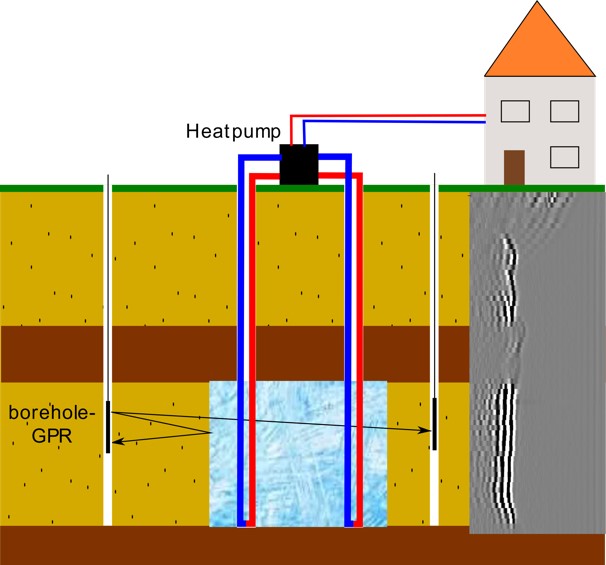
GEWS
Development and construction of a deep-horizontal geological ice heat storage system (GEWS) as a demonstration plant at the TestUM/Wittstock test field.
Project: technical realisation and operation, numerical modelling,assessment of hydrogeochemical and microbiological impact
Duration: 10/2021 - 09/2023
Funding: Federal Ministry of Education and Research (BMBF)
Partner: Christian-Albrechts-Universität zu Kiel (Kiel University) - Institute of Geosciences, project coordinator;
Helmholtz-Zentrum für Umweltforschung GmbH UFZ (Helmholtz centre for environmental research) - Departments ENVINF, ISOBIO, MET; Fraunhofer-Einrichtung für Energieinfrastrukturen und Geothermie IEG (Fraunhofer Research Institution for Energy Infrastructures and Geothermal Systems)
An ice-heat-storage/latent-heat-storage is based on using heat pumps to extract heat from a storage medium until it is cooled down to its freezing point. At the phase transition from liquid to solid a lot of latent heat is released. This energy can be used for heating. The resulting frozen subsurface volume serves as a cold storage and can be used for cooling purposes.
The GEWS-project (GEWS: Geologischer Eis-Wärme-Speicher = geological ice-heat-storage) is about applying the concept of latent heat storage on near-surface aquifers. In contrast to conventional latent heat storages, here geothermal probes which are able to induce controlled freezing and thawing in the stratified subsurface are used. The goal is to develop cost-effective and scalable GEWS-installations for unconsolidated sediments, which are adapted for urban areas, because there is the most need for cooling. The study aims to develop the technology for GEWS plants and investigate environmental impact and economic efficiency.
UFZ’s MET department is in charge of developing a geophysical monitoring concept. It has to be able to observe the spatial propagation of subsurface freezing. Via borehole Ground-Penetrating-Radar (GPR) measurements the frozen-unfrozen interface in the aquifer is imaged. Information about the current state of the latent-heat-storage can be incorporated to validate thermal and energetic modelling. Observation wells are implemented at the test site and the monitoring concept is tested during the GEWS-plant trial phase.
